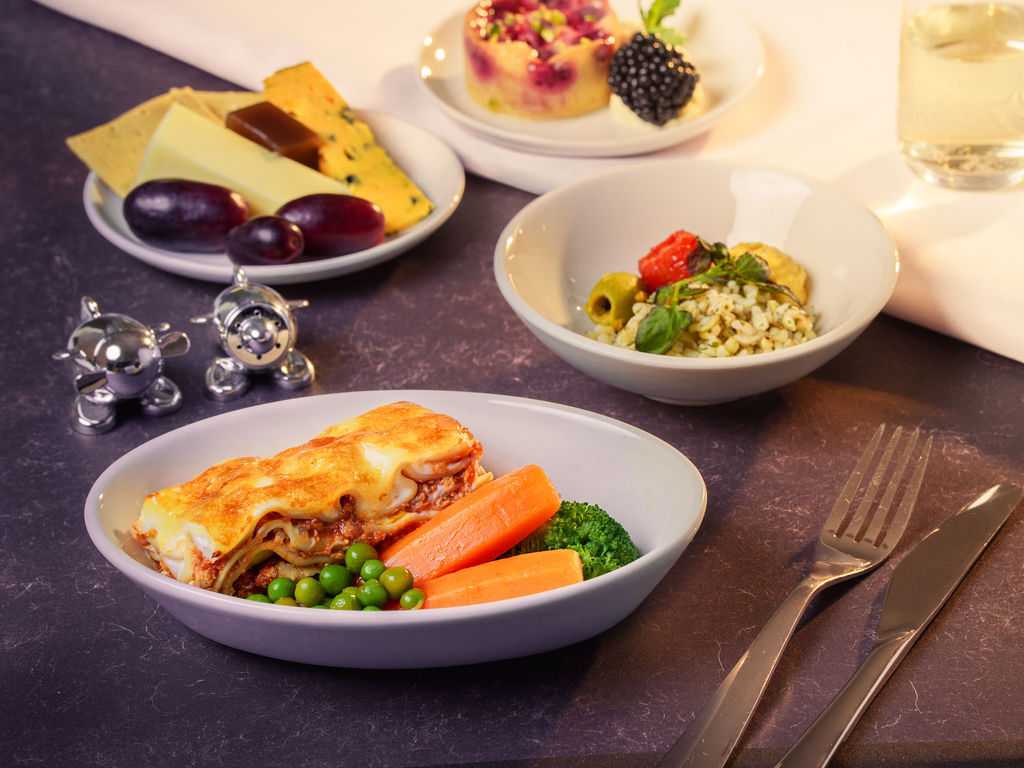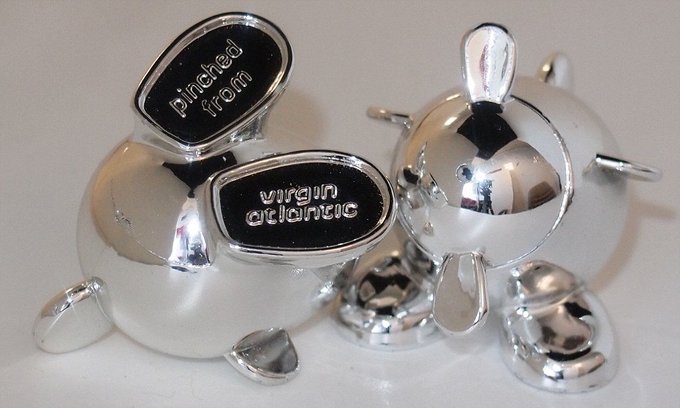How An Airline Shook Off Petty Theft
Over the last few years — decades, probably — commercial passenger airlines have taken aggressive steps to lower the cost of flying the friendly skies. Anything and everything is fair game, and in-flight meals have been a common target. Sometimes the changes are extreme — most domestic flights in the United States do not have in-flight meals at all (but you can buy snacks). Some are more subtle; in 1987, for example, American Airlines “ remove[d] one olive from every first-class salad plate, saving the airline $40,000 per year,” according to Food Network.
International travel, though, makes things tricky. The longer flights make it harder for airlines to keep their customers unfed, and it’s really hard to justify saving the $20 on lunch when you’re charging passengers perhaps 100 times that. Despite the general move to limit free in-flight food offerings, some airlines not only offer meals, but make them a selling point. Virgin Atlantic, for example, has a webpage about their onboard eats, calling them “a culinary adventure of flavourful dishes to nourish and excite, drinks to relax and unwind, and snacks to surprise and delight.” Here’s a picture of an example meal they offer to their “Premium” cabin customers — it’s a chicken lasagna with a tomato oregano sauce and garden vegetables if you’re interested.

Looks pretty good, right? But don’t focus on the food. Pay attention to the tiny silver airplanes on the left, about halfway down the image. Those are salt and pepper shakers. And if you think they’re incredibly cute, you aren’t alone. Virgin Atlantic introduced those custom seasoning dispensers — called “Orville” and “Wilbur,” after the Wright brothers — in their Upper Class seating (the U.S.-equivalent of First Class) in or around 1999, and upper-echelon flyers have been fans ever since.
And some — many — decided to take the salt and pepper shakers home with them. As a keepsake, or to resell on eBay.
In October of 2011, the stealing of the shakers got so bad that Virgin Atlantic decided to simply discontinue them altogether. But that proved unpopular, and the airline quickly reversed course. The shaker thefts resumed, and the company was stuck continuing with an unexpected expense they had to account for.
And then, they got creative. The airline converted an unforeseen cost into a guerilla marketing opportunity. As Richard Branson, the company’s founder, wrote in a corporate blog post a month later, “They became so popular that lots of light-fingered customers couldn’t resist taking them as souvenirs of their flights. Our accountants wanted to have them removed because it was costing too much to replace the stolen ones! Rather than removing them, we added ‘pinched from Virgin Atlantic’ on the bottom of them,” as seen below.
It’s an idea Branson was particularly proud of. In 2015, Fast Company interviewed him about the impact of design on the consumer experience, and Branson specifically cited Wilbur and Orville as a win:
We then found that people were continuing to steal them, and they were ending up on their dining-room table. They hadn’t looked underneath. Their guests would look underneath. And the whole evening was spent talking about Virgin Atlantic in one of our best advertising tools ever! That was a fun one which worked really well.
Since then, Wilbur and Orville have gone to even more heights, at least insofar as the collectible airline memorabilia racket is concerned. In December of 2017, the company decided to introduce a holiday-themed version of Wilbur and Orville — the same planes, but in red, as the Los Angeles Times reported. And again, theft was expected. Per the Times, “the airline tells passengers to feel free to steal (or as they put it “pinch”) the red limited-edition holiday versions from their flights.”
Today, you’ll still find Orville and Wilbur as part of your in-flight meal experience if you fly the equivalent of Business or First Class. And if you want one without having to pay the price associated with one of those tickets, no worries — you can fetch a pair on eBay for about $20.
Bonus fact: If you look carefully at the Virgin Atlantic shakers, you’ll note that they have different numbers of dispensing holes — one has only one, while the other has six. Which contains which seasoning? Most likely, in this case, the salt is in the one-hole one and the pepper is in the other. But it’s not always the case that the salt goes in the one with fewer holes. As the Salt and Pepper Shaker Museum (yes, it’s real) of Gaithersburg, Tennessee, explains, “Here in the US excessive salt is considered bad for you, so the salt shaker is the one with the fewer holes, but in parts of Europe it’s the other way around. It also has to do with availability – in some places salt was rare and prized, whereas in Europe it was difficult to get your hands on pepper since it’s a spice from the Orient (very exotic) which was used to spice up meat that was past its prime.” Or, like most recipes, when it comes to salt and pepper, which goes where (and how much you use) is to taste.
From the Archives: The Science Behind the Slogan: Morton Salt, a common brand in the U.S., has the slogan “when it rains, it pours.” That’s not a tautology (and only would be if it were reversed, regardless) — it’s science. Here’s why.

